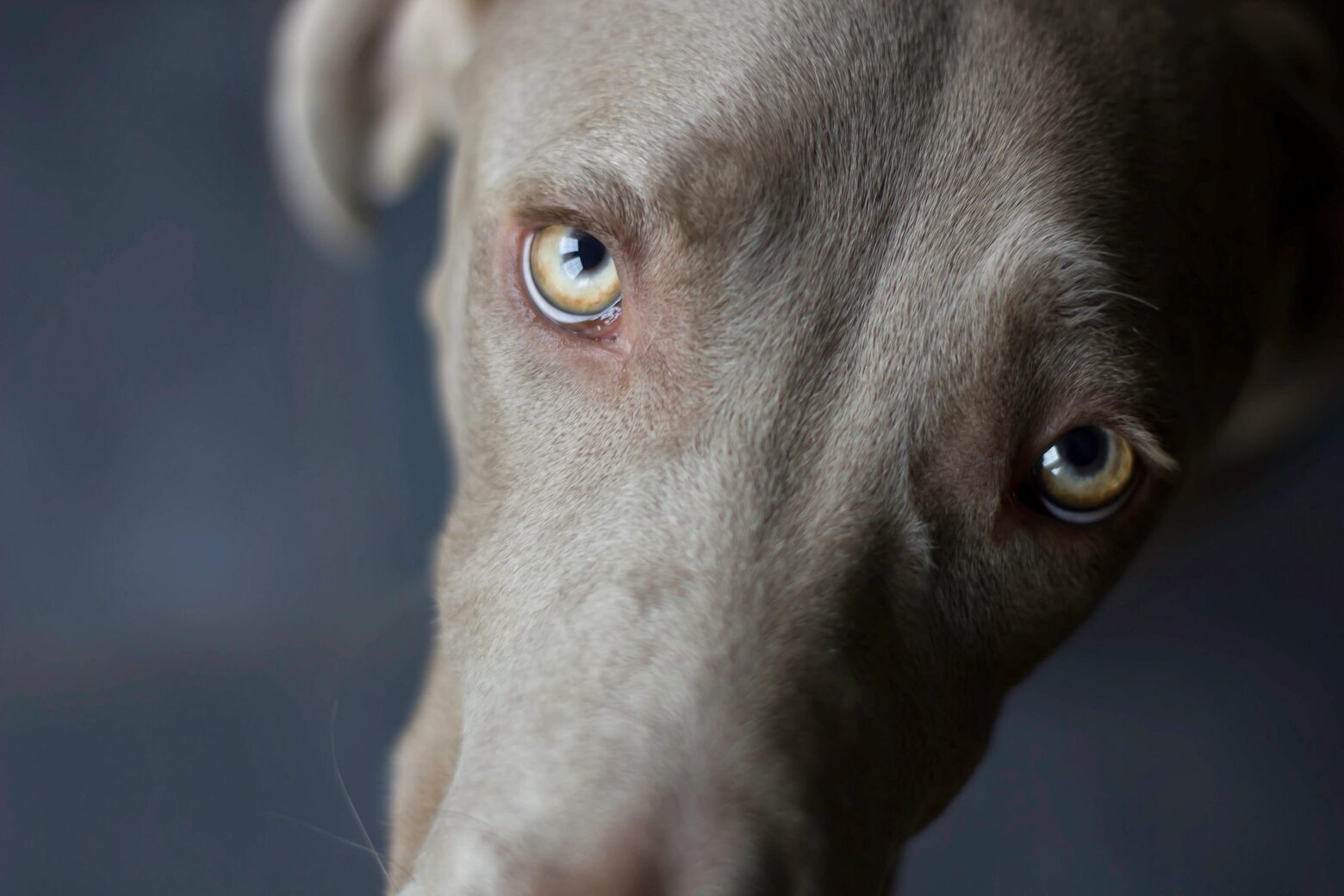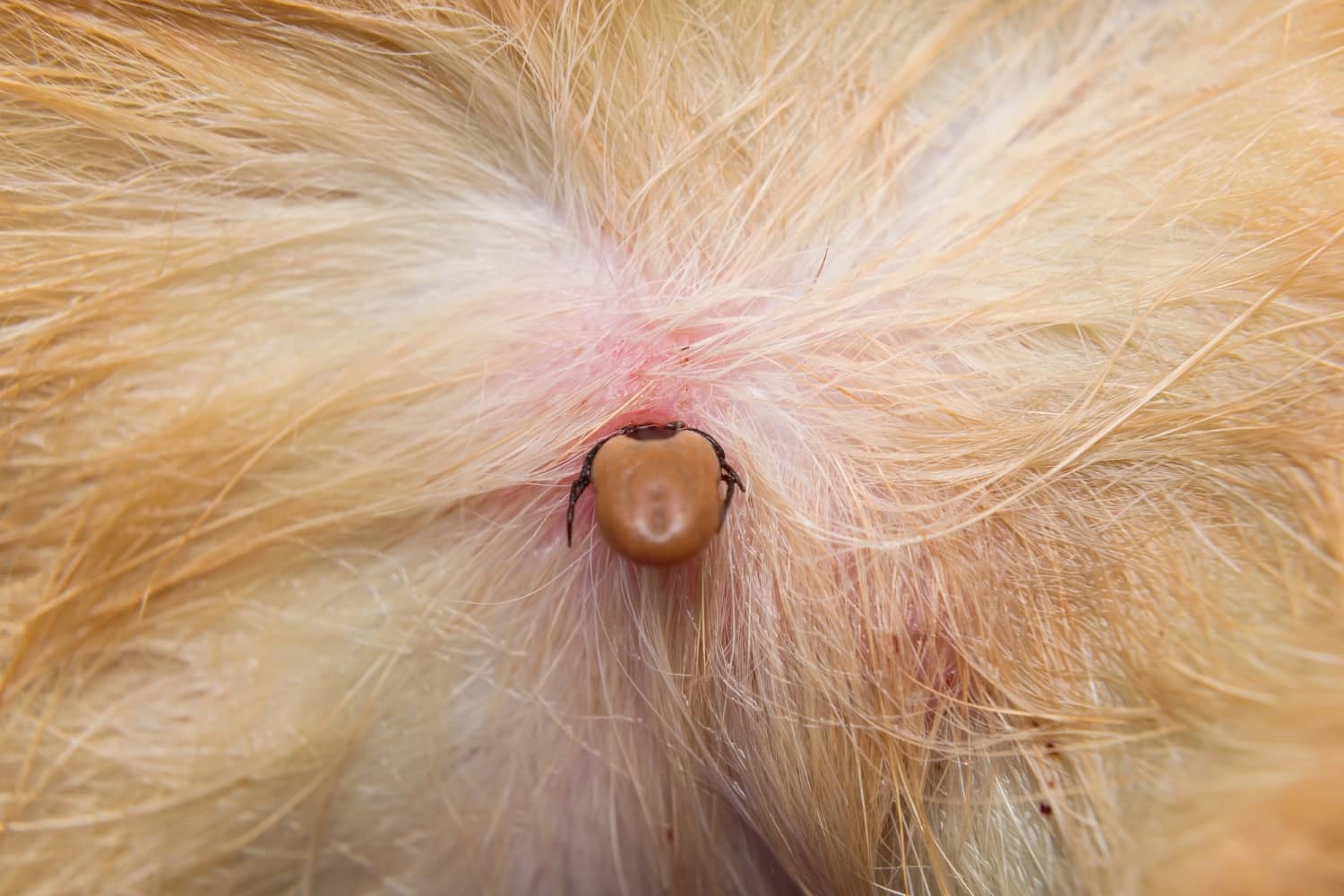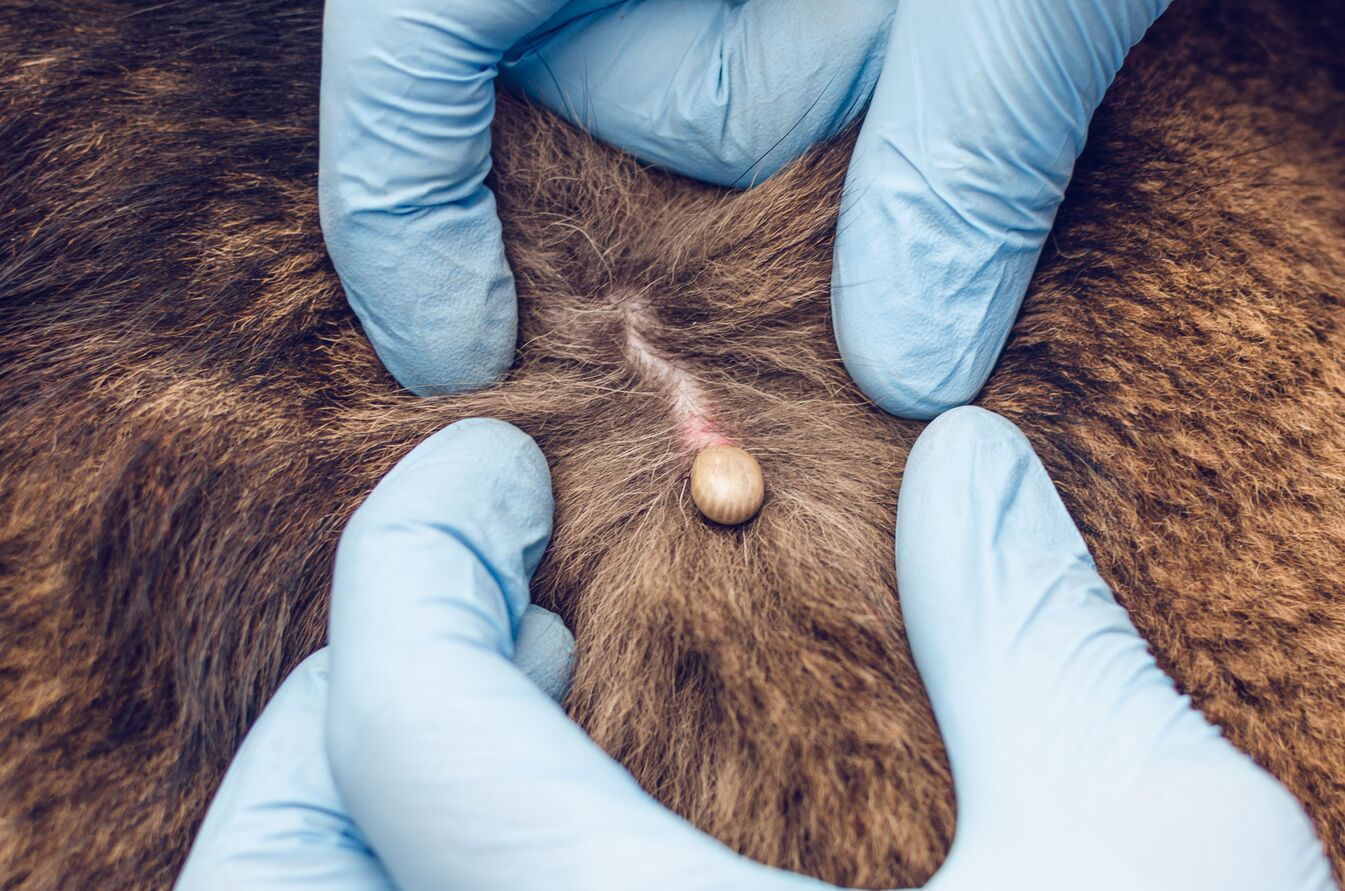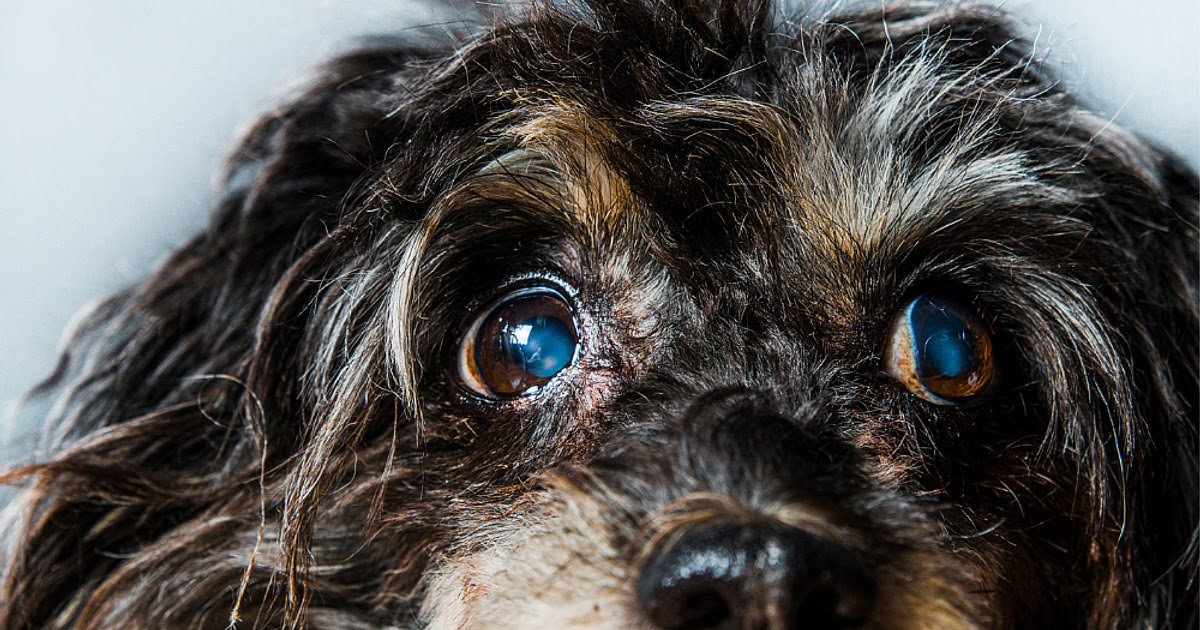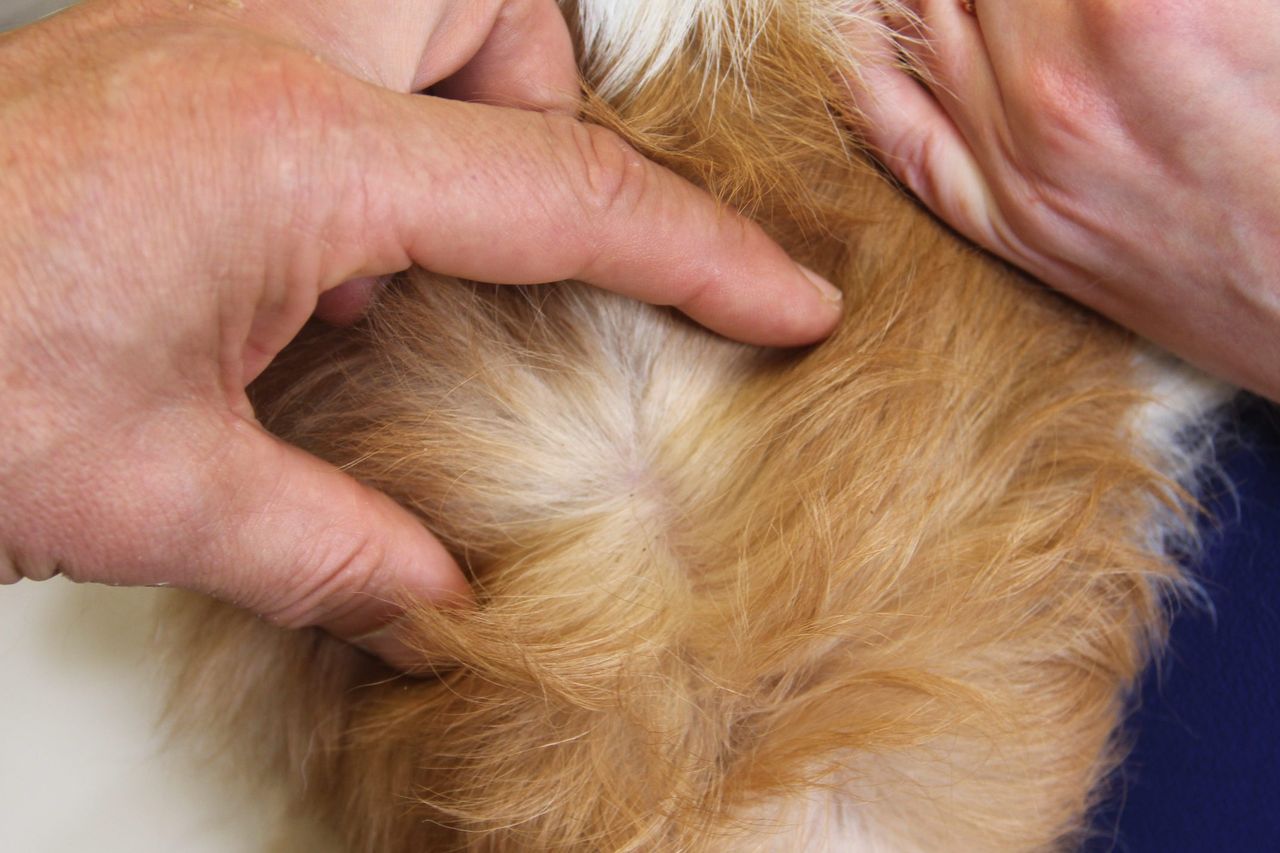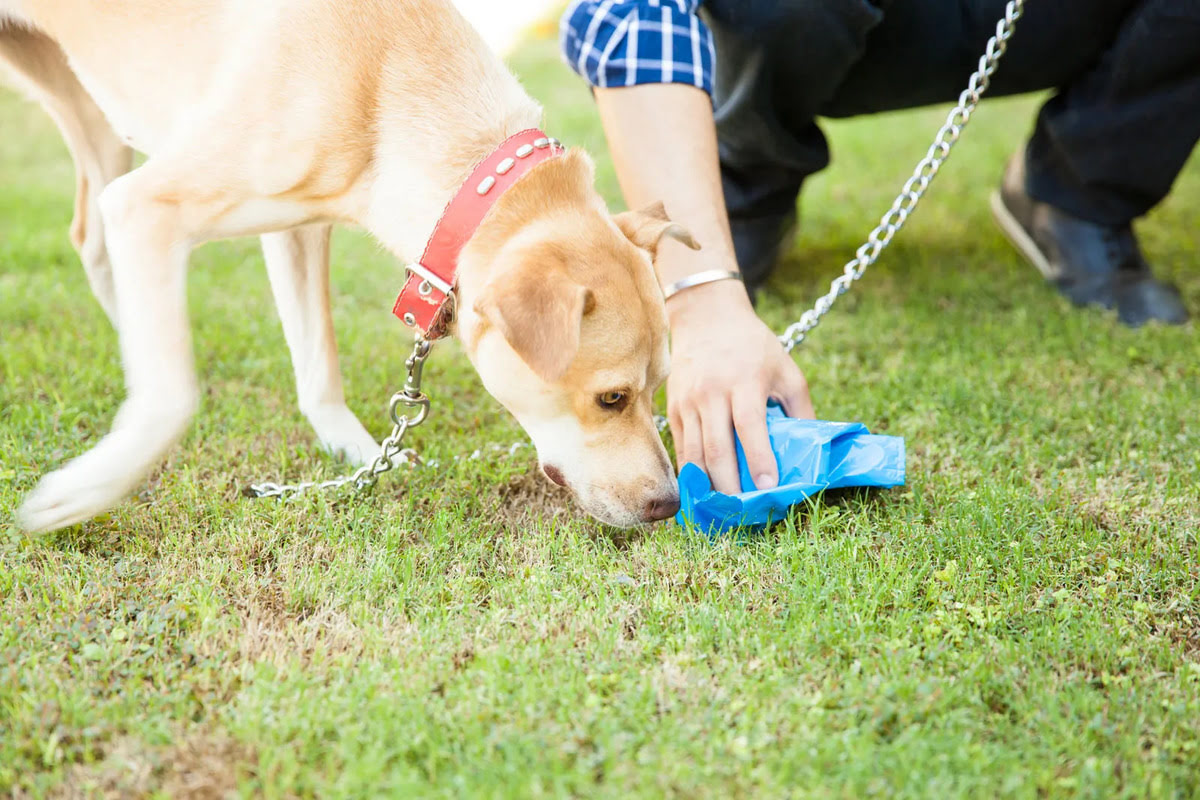Home>Health & Wellness>Common Health Issues>What Does Cancer Look Like In A Dog’s Mouth
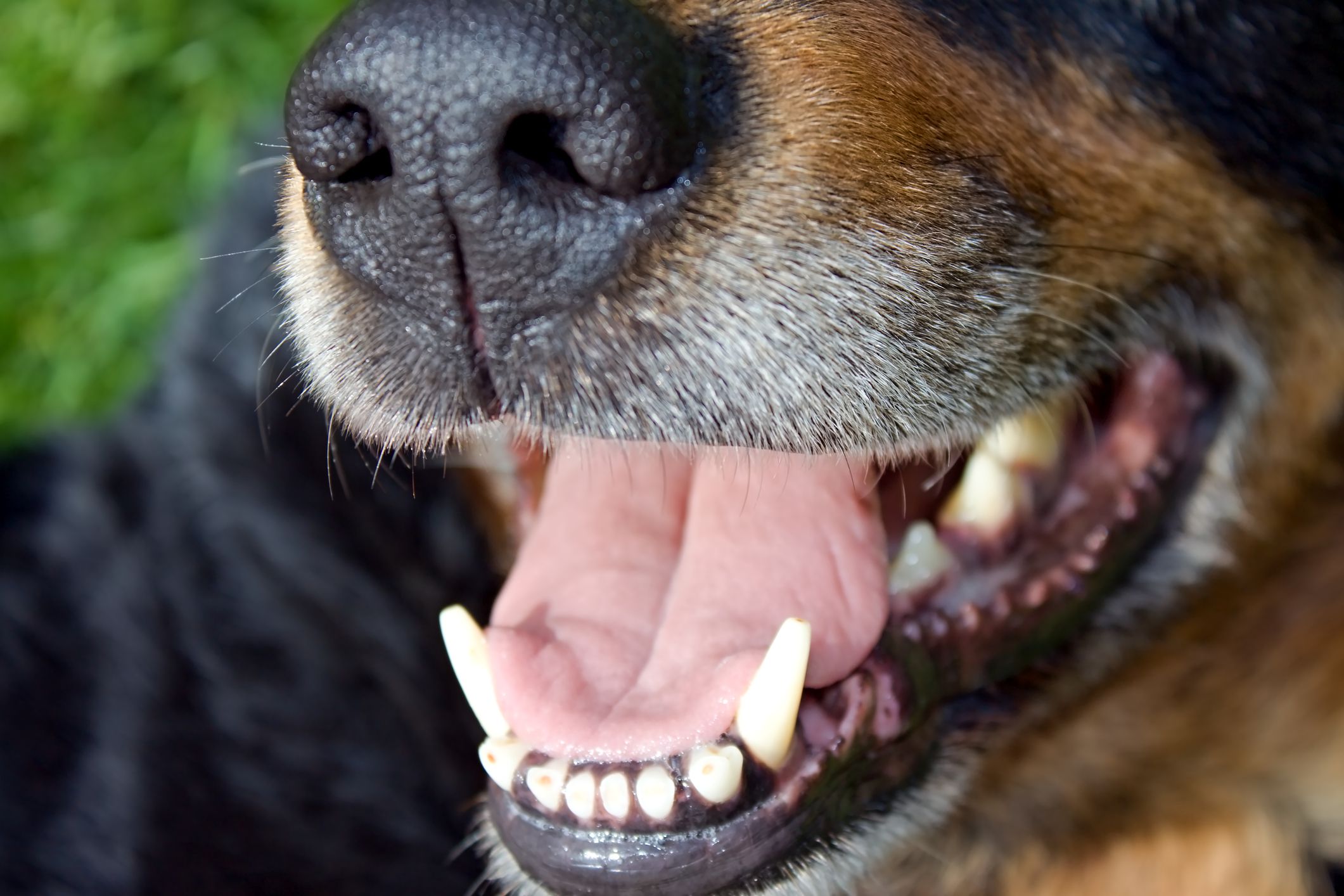

Common Health Issues
What Does Cancer Look Like In A Dog’s Mouth
Published: February 4, 2024
Learn about common health issues in dogs, including what cancer looks like in a dog's mouth. Understand the signs and symptoms to keep your pet healthy.
(Many of the links in this article redirect to a specific reviewed product. Your purchase of these products through affiliate links helps to generate commission for Pawsomeoldies.com, at no extra cost. Learn more)
Table of Contents
Introduction
Oral cancer in dogs is a serious health concern that can significantly impact a dog's quality of life. Just like humans, dogs can develop various types of oral cancer, which can affect the lips, tongue, gums, and other oral tissues. Understanding the signs, symptoms, diagnosis, treatment options, and prognosis of oral cancer in dogs is crucial for pet owners to provide timely and appropriate care for their beloved companions.
While the thought of cancer can be daunting, it's important to remember that early detection and intervention can greatly improve the chances of successful treatment and a better outcome for the dog. By being aware of the common types of oral cancer in dogs and recognizing the signs and symptoms, pet owners can play a proactive role in safeguarding their pet's health.
In this comprehensive guide, we will delve into the various aspects of oral cancer in dogs, shedding light on the different types of oral cancer, the warning signs to watch out for, the diagnostic procedures used by veterinarians, available treatment options, and the prognosis for dogs diagnosed with oral cancer. Additionally, we will explore preventive measures and early detection tips that can aid in identifying potential issues at an early stage, potentially improving the chances of successful treatment and recovery for our furry friends.
By gaining a deeper understanding of what oral cancer looks like in a dog's mouth and how it can be addressed, pet owners can be better equipped to provide the necessary care and support for their canine companions. Let's embark on this journey to uncover the crucial information about oral cancer in dogs and empower ourselves to be proactive advocates for our pets' well-being.
Read more: What Does Cancer On A Dog’s Toe Look Like
Common Types of Oral Cancer in Dogs
Oral cancer in dogs can manifest in various forms, each with its own distinct characteristics and implications. Understanding the common types of oral cancer is essential for recognizing potential issues and seeking timely veterinary care. Here are some of the prevalent types of oral cancer seen in dogs:
1. Melanoma
Melanoma is a type of oral cancer that can affect a dog's mouth, often appearing as pigmented masses on the gums, lips, or tongue. These masses may vary in size and can be either benign or malignant. Malignant melanomas tend to be aggressive and can quickly spread to other parts of the body, making early detection and intervention crucial for a favorable outcome.
2. Squamous Cell Carcinoma
Squamous cell carcinoma is another common form of oral cancer in dogs, typically originating in the mouth or throat. This type of cancer often presents as non-healing ulcers, lumps, or masses in the oral cavity. It has the potential to invade surrounding tissues and may lead to difficulty in eating, swallowing, or breathing if left untreated.
3. Fibrosarcoma
Fibrosarcoma is a type of cancer that can develop in the soft tissues of a dog's mouth, including the gums and tongue. It is characterized by the formation of firm, irregular masses that can impede normal oral functions. Fibrosarcomas can be locally invasive and may necessitate aggressive treatment to prevent further spread.
Read more: What Does Cancer On A Dog’s Skin Look Like
4. Oral Osteosarcoma
Oral osteosarcoma is a malignant bone tumor that commonly affects the jawbones of dogs. This aggressive cancer can cause swelling, pain, and difficulty in chewing. As it progresses, oral osteosarcoma can lead to facial deformity and compromise the dog's overall well-being.
5. Malignant Oral Histiocytoma
Malignant oral histiocytomas are rare but aggressive tumors that can arise in the oral cavity of dogs. These tumors often grow rapidly and can infiltrate nearby tissues, posing significant challenges for effective treatment.
By familiarizing ourselves with these common types of oral cancer in dogs, we can be better prepared to recognize potential warning signs and take proactive measures to address any concerns related to our canine companions' oral health. Early detection and prompt veterinary intervention are pivotal in enhancing the chances of successful treatment and improving the overall prognosis for dogs diagnosed with oral cancer.
Signs and Symptoms of Oral Cancer in Dogs
Recognizing the signs and symptoms of oral cancer in dogs is crucial for early detection and prompt intervention. While dogs may not be able to verbally communicate their discomfort, attentive pet owners can observe subtle changes in their pet's behavior and oral health. Here are the common signs and symptoms that may indicate the presence of oral cancer in dogs:
-
Abnormal Growth or Masses: One of the primary indicators of oral cancer in dogs is the presence of abnormal growths or masses in the mouth. These may appear as lumps, bumps, or discolored areas on the gums, tongue, or other oral tissues. It's essential to monitor any unusual growths and promptly seek veterinary evaluation if such abnormalities are noticed.
-
Difficulty Eating or Swallowing: Dogs with oral cancer may experience difficulty in eating or swallowing. This can manifest as reluctance to eat, dropping food from the mouth, excessive drooling, or visible discomfort while chewing. Any changes in eating habits should be closely monitored and reported to a veterinarian.
-
Bleeding or Discharge: Unexplained bleeding from the mouth or discharge, such as pus or mucus, can be indicative of oral health issues, including oral cancer. Pet owners should pay attention to any abnormal discharge or bleeding and seek professional assessment to determine the underlying cause.
-
Halitosis (Bad Breath): While bad breath is common in dogs, persistent and foul-smelling breath that does not improve with dental care may signal an underlying oral health issue, including oral cancer. Unpleasant breath odor accompanied by other symptoms should prompt a thorough oral examination by a veterinarian.
-
Loose Teeth or Tooth Loss: Oral cancer can affect the integrity of the teeth and surrounding structures, leading to loose teeth or tooth loss. Pet owners should be vigilant in monitoring their dog's dental health and promptly address any changes related to tooth stability.
-
Pain and Discomfort: Dogs with oral cancer may exhibit signs of pain and discomfort, such as pawing at the mouth, reluctance to be touched around the face, or vocalizing when eating or yawning. These behaviors can indicate oral discomfort and should be investigated by a veterinary professional.
-
Changes in Behavior: Behavioral changes, including irritability, depression, or withdrawal, can be linked to underlying health issues, including oral cancer. Observing alterations in a dog's usual demeanor can provide valuable clues regarding their overall well-being.
By being attentive to these signs and symptoms, pet owners can play a proactive role in safeguarding their dog's oral health. Early recognition of potential indicators of oral cancer enables timely veterinary evaluation and intervention, ultimately contributing to improved outcomes for dogs facing this challenging diagnosis.
Diagnosis and Treatment Options
Upon observing potential signs of oral cancer in their dogs, pet owners should promptly seek veterinary evaluation to determine an accurate diagnosis and explore available treatment options. Veterinarians employ a comprehensive approach to diagnose oral cancer in dogs, utilizing various diagnostic tools and techniques to assess the extent of the disease and formulate an appropriate treatment plan.
Read more: What Does Eye Cancer Look Like On A Dog
Diagnosis
-
Physical Examination: The initial step in diagnosing oral cancer involves a thorough physical examination of the dog's oral cavity. Veterinarians carefully inspect the mouth, gums, tongue, and other oral tissues for any abnormalities, including lumps, ulcers, or discolored areas.
-
Biopsy: To confirm the presence of cancerous cells, a biopsy may be performed, wherein a small sample of the abnormal tissue is collected and examined under a microscope. This procedure helps determine the type of cancer and its malignancy, guiding subsequent treatment decisions.
-
Imaging Studies: X-rays, CT scans, or MRIs may be utilized to assess the extent of the cancer, identify potential metastasis to nearby structures, and evaluate the overall health of the oral and facial region.
Treatment Options
The treatment approach for oral cancer in dogs is tailored to the specific type of cancer, its stage, and the overall health of the dog. Several treatment modalities may be considered, either individually or in combination, to address oral cancer and improve the dog's quality of life.
-
Surgery: In cases where the cancerous growth is localized and deemed operable, surgical removal of the tumor and affected tissues may be recommended. This approach aims to eliminate the cancerous cells and prevent further spread.
-
Radiation Therapy: Radiation therapy can be employed to target and shrink tumors, alleviate pain, and slow the progression of oral cancer. It may be used as a primary treatment or in conjunction with surgery to enhance the effectiveness of cancer management.
-
Chemotherapy: Chemotherapy, involving the use of anti-cancer medications, may be prescribed to impede the growth of cancer cells, particularly in cases of aggressive or metastatic oral cancer. This systemic treatment approach aims to control the spread of cancer throughout the body.
-
Palliative Care: In situations where curative treatment may not be feasible, palliative care focuses on enhancing the dog's comfort and quality of life through pain management, nutritional support, and symptom alleviation.
-
Follow-Up Care: Following the initial treatment, regular follow-up appointments and monitoring are essential to assess the dog's response to treatment, manage potential side effects, and address any recurrence or new developments.
By collaborating closely with veterinarians and exploring the available diagnostic and treatment options, pet owners can make informed decisions regarding the care and well-being of their dogs diagnosed with oral cancer. The combined efforts of pet owners and veterinary professionals play a pivotal role in addressing oral cancer and striving to improve the prognosis and quality of life for affected dogs.
Prognosis and Life Expectancy
The prognosis for dogs diagnosed with oral cancer can vary significantly based on several factors, including the type and stage of the cancer, the effectiveness of treatment, and the overall health and resilience of the individual dog. While the diagnosis of oral cancer in dogs can be distressing, understanding the potential outcomes and life expectancy can help pet owners navigate the challenges ahead with greater clarity and preparedness.
In general, the prognosis for oral cancer in dogs is guarded, especially in cases where the cancer has advanced or metastasized to other parts of the body. Malignant oral tumors, if left untreated or if they exhibit aggressive behavior, can significantly impact a dog's quality of life and overall survival. However, early detection and prompt intervention can positively influence the prognosis and potentially extend the dog's life expectancy.
The specific type of oral cancer diagnosed in the dog plays a crucial role in determining the prognosis. For example, malignant melanomas and squamous cell carcinomas are known for their potential to spread rapidly and invade surrounding tissues, posing significant challenges for effective treatment. Conversely, benign tumors or early-stage cancers may offer a more favorable prognosis, especially if they are amenable to complete surgical removal and follow-up care.
The effectiveness of the chosen treatment modality also influences the prognosis for dogs with oral cancer. Surgical removal of localized tumors, when feasible, can improve the prognosis by eliminating the primary source of cancer. Additionally, adjuvant therapies such as radiation therapy or chemotherapy may be employed to target residual cancer cells and mitigate the risk of recurrence, thereby enhancing the dog's chances of long-term survival.
It's important to note that while treatment can extend a dog's life and alleviate symptoms, it may not always result in a complete cure, particularly in cases of advanced or aggressive oral cancer. In such instances, palliative care focused on enhancing the dog's comfort and quality of life becomes paramount, allowing pet owners to prioritize their dog's well-being and provide supportive care tailored to their specific needs.
Ultimately, the prognosis and life expectancy for dogs with oral cancer are multifaceted and influenced by a combination of medical, environmental, and individual factors. By working closely with veterinary professionals, pet owners can gain valuable insights into their dog's prognosis, make informed decisions regarding treatment, and provide the necessary support to optimize their beloved companion's well-being in the face of this challenging diagnosis.
Prevention and Early Detection Tips
Preventing oral cancer in dogs and detecting potential issues at an early stage are pivotal in safeguarding the overall health and well-being of our furry companions. While not all cases of oral cancer can be prevented, implementing proactive measures and staying vigilant can significantly contribute to identifying potential concerns and seeking timely veterinary care. Here are essential prevention and early detection tips to empower pet owners in promoting their dog's oral health:
-
Regular Oral Examinations: Conducting routine oral examinations for dogs is a fundamental aspect of preventive care. Pet owners should regularly inspect their dog's mouth, gums, and teeth, looking for any unusual growths, discolorations, or changes in oral tissues. Early detection of abnormalities can prompt timely veterinary evaluation and intervention.
-
Professional Dental Care: Maintaining good oral hygiene through professional dental cleanings and home dental care routines can help minimize the risk of oral health issues, including oral cancer. Regular dental check-ups and cleanings performed by veterinary professionals can aid in identifying and addressing potential concerns before they escalate.
-
Healthy Diet and Nutrition: Providing a balanced and nutritious diet supports overall health, including oral health, in dogs. A diet rich in essential nutrients and vitamins can bolster the immune system and contribute to the maintenance of healthy oral tissues, potentially reducing the risk of oral health complications, including oral cancer.
-
Avoidance of Harmful Substances: Limiting a dog's exposure to potentially harmful substances, such as tobacco smoke, toxic plants, and chemicals, can help mitigate the risk of oral health issues, including oral cancer. Creating a safe and toxin-free environment for dogs can contribute to their overall well-being.
-
Prompt Veterinary Consultation: Any concerns related to a dog's oral health, including the presence of abnormal growths, changes in eating habits, or oral discomfort, should prompt immediate veterinary consultation. Timely assessment by a veterinarian can facilitate early diagnosis and the formulation of an appropriate treatment plan if oral cancer or other oral health issues are suspected.
-
Education and Awareness: Pet owners can benefit from educating themselves about the signs and symptoms of oral cancer in dogs and staying informed about preventive measures. Awareness of potential risk factors and early warning signs empowers pet owners to take proactive steps in safeguarding their dog's oral health.
By integrating these prevention and early detection tips into their routine care practices, pet owners can play an active role in promoting their dog's oral health and well-being. Proactive measures, combined with regular veterinary care and attention, can contribute to the early identification of potential issues and the implementation of timely interventions, ultimately striving to enhance the quality of life for our beloved canine companions.
Read more: What Does A Tick Scab Look Like On A Dog?
Conclusion
In conclusion, understanding the nuances of oral cancer in dogs is paramount for pet owners seeking to provide comprehensive care for their beloved companions. The journey through the various aspects of oral cancer, from recognizing the common types and signs to exploring diagnosis, treatment, prognosis, and preventive measures, offers valuable insights into the proactive role that pet owners can play in safeguarding their dog's oral health.
By familiarizing themselves with the common types of oral cancer, such as melanoma, squamous cell carcinoma, fibrosarcoma, oral osteosarcoma, and malignant oral histiocytoma, pet owners can be better equipped to recognize potential warning signs and take proactive measures to address any concerns related to their canine companions' oral health. Early detection and prompt veterinary intervention are pivotal in enhancing the chances of successful treatment and improving the overall prognosis for dogs diagnosed with oral cancer.
The signs and symptoms of oral cancer in dogs, including abnormal growths or masses, difficulty eating or swallowing, bleeding or discharge, halitosis, loose teeth, pain and discomfort, and changes in behavior, serve as crucial indicators for pet owners to remain vigilant and seek professional evaluation when necessary. Recognizing these signs early can lead to timely diagnosis and intervention, potentially improving the outcomes for dogs facing this challenging diagnosis.
Furthermore, the diagnostic procedures and treatment options available for oral cancer in dogs, including physical examinations, biopsies, imaging studies, surgery, radiation therapy, chemotherapy, and palliative care, underscore the comprehensive approach taken by veterinary professionals to address oral cancer. Collaboration between pet owners and veterinarians is essential in formulating informed decisions regarding the care and well-being of dogs diagnosed with oral cancer.
While the prognosis for dogs with oral cancer can be guarded, early detection, effective treatment, and supportive care can positively influence the outcomes and potentially extend the life expectancy of affected dogs. By staying informed about preventive measures, such as regular oral examinations, professional dental care, healthy diet and nutrition, avoidance of harmful substances, and prompt veterinary consultation, pet owners can actively contribute to promoting their dog's oral health and well-being.
In essence, the journey through the various facets of oral cancer in dogs empowers pet owners to be proactive advocates for their canine companions' oral health. By integrating preventive measures, staying attentive to potential signs, and seeking timely veterinary care, pet owners can strive to enhance the quality of life for their dogs and navigate the challenges of oral cancer with knowledge, compassion, and dedication.
